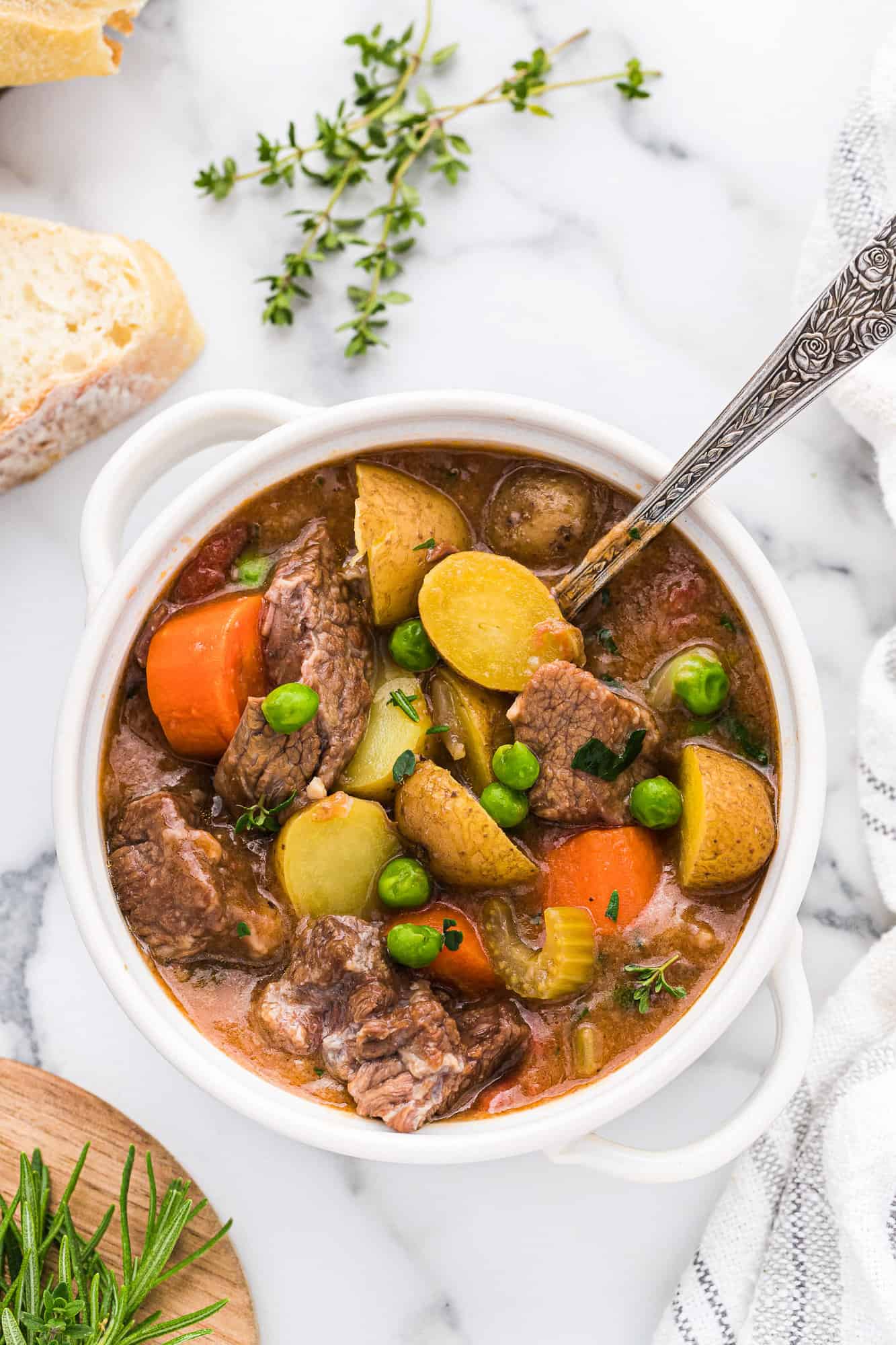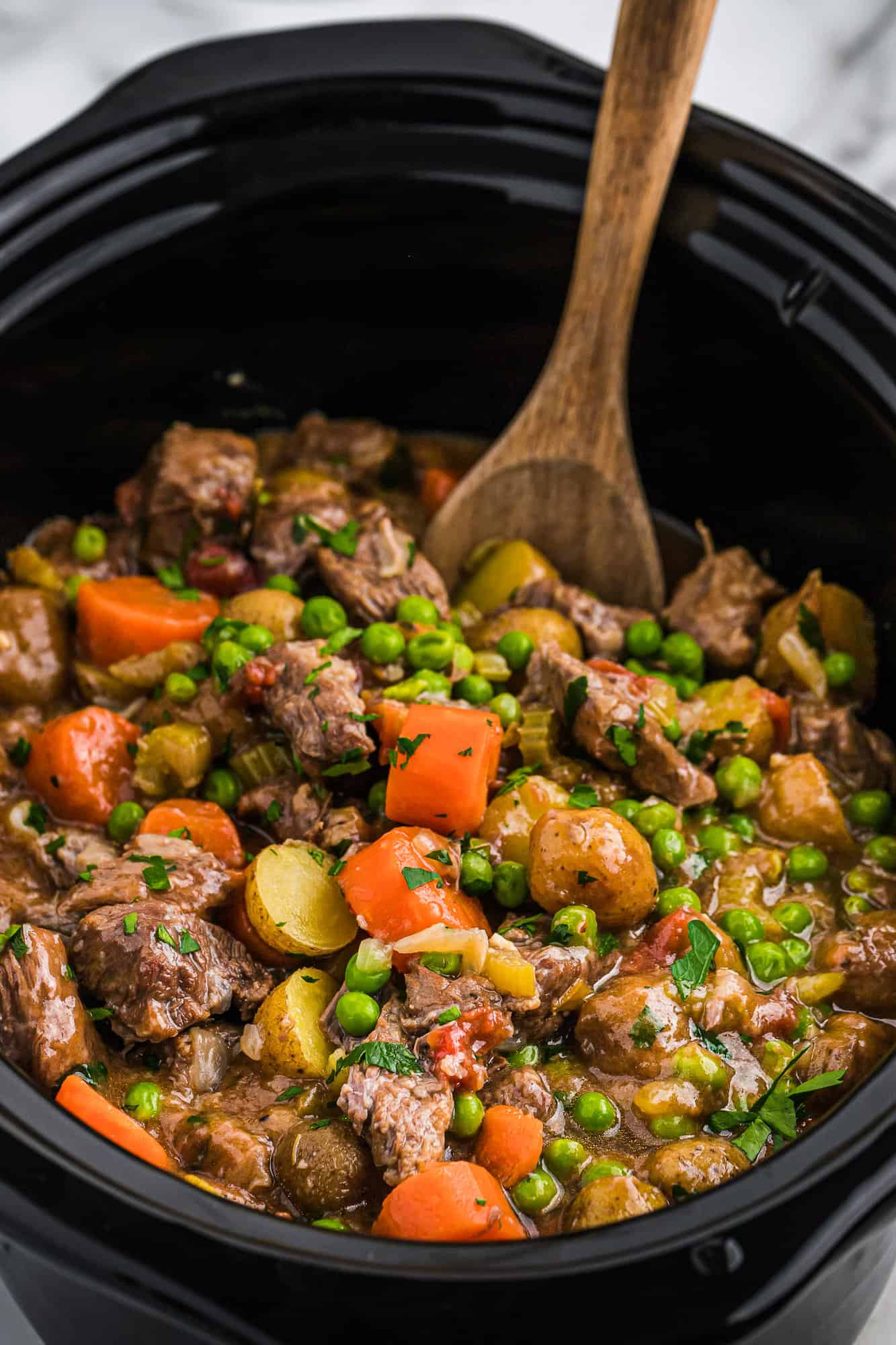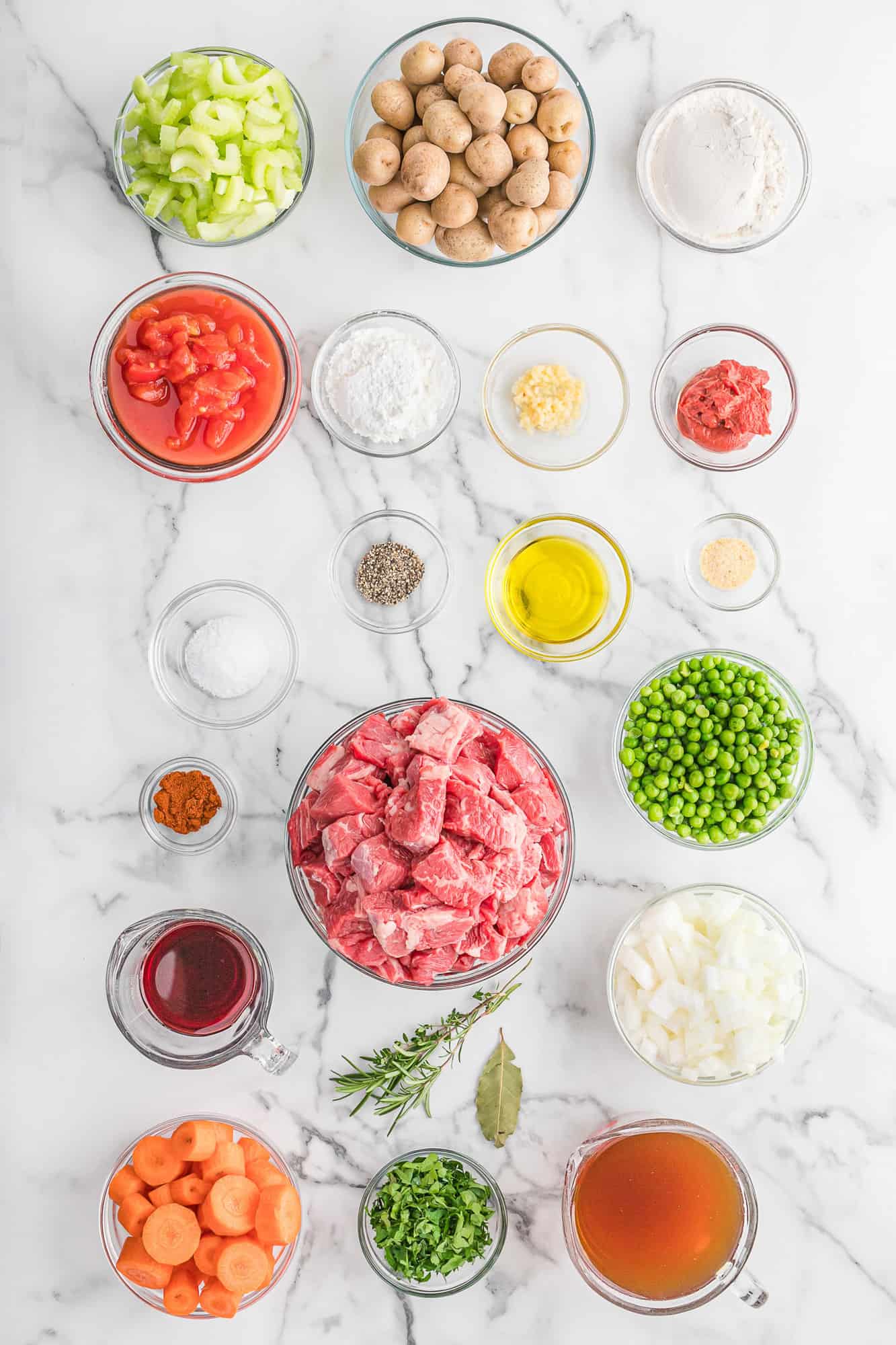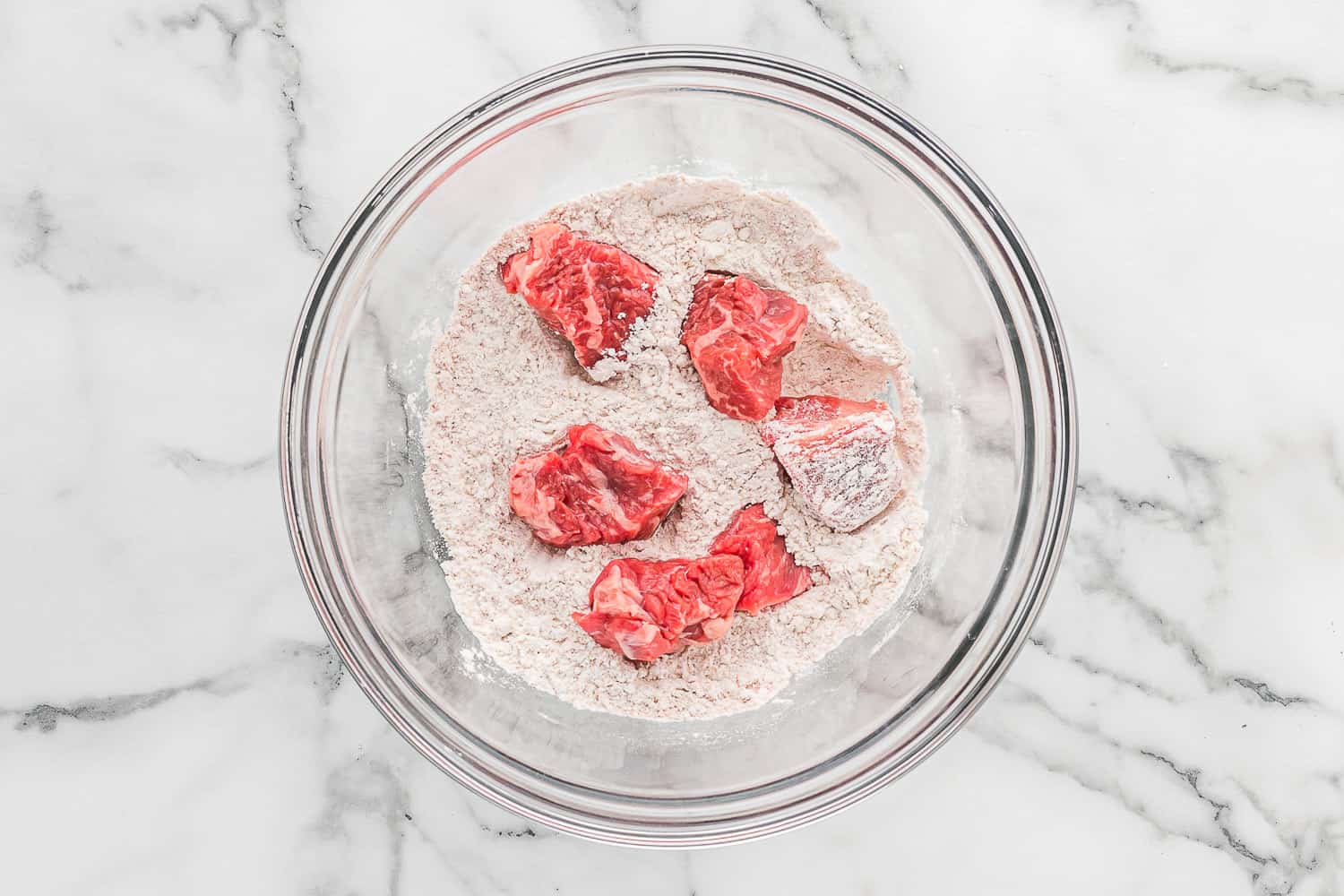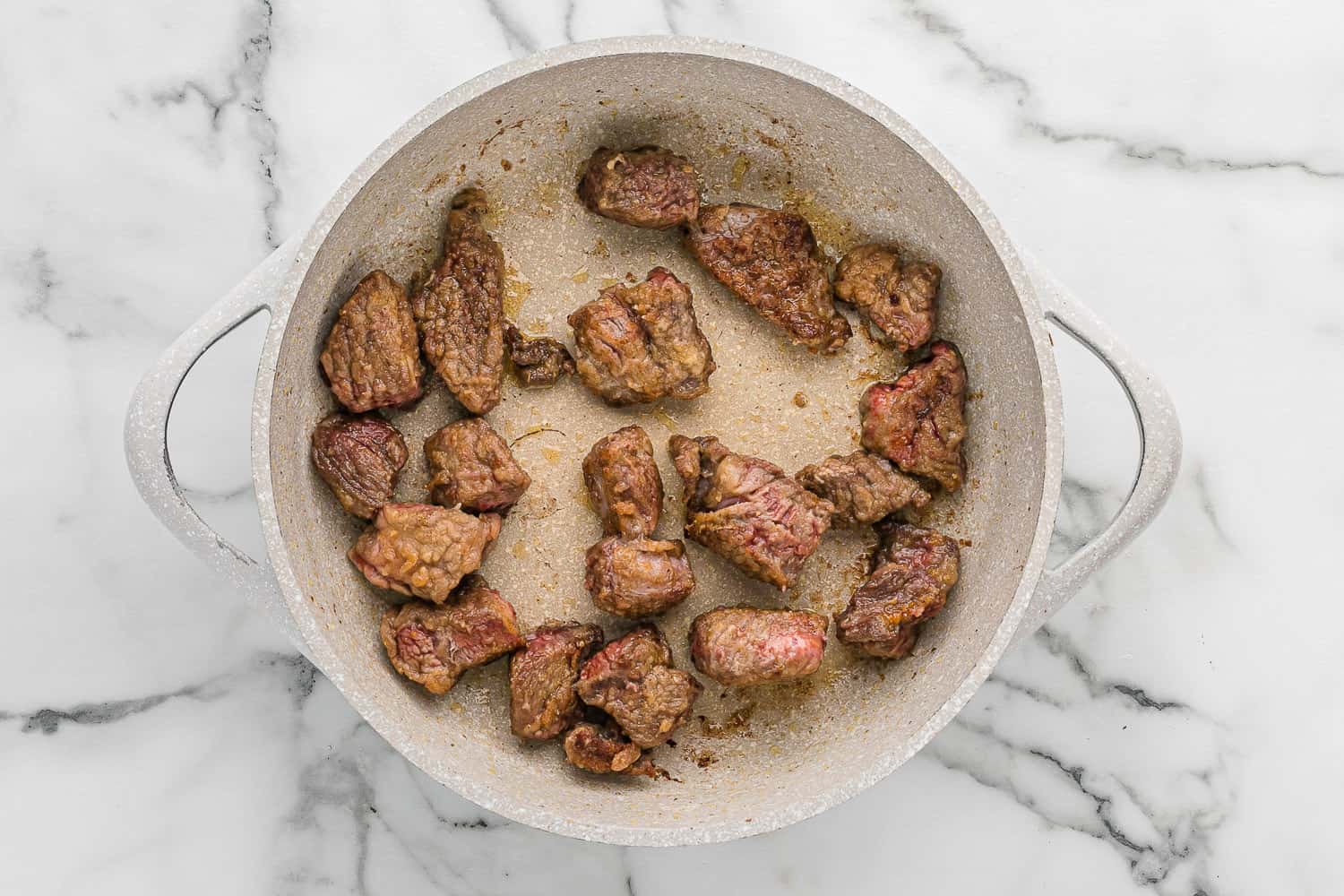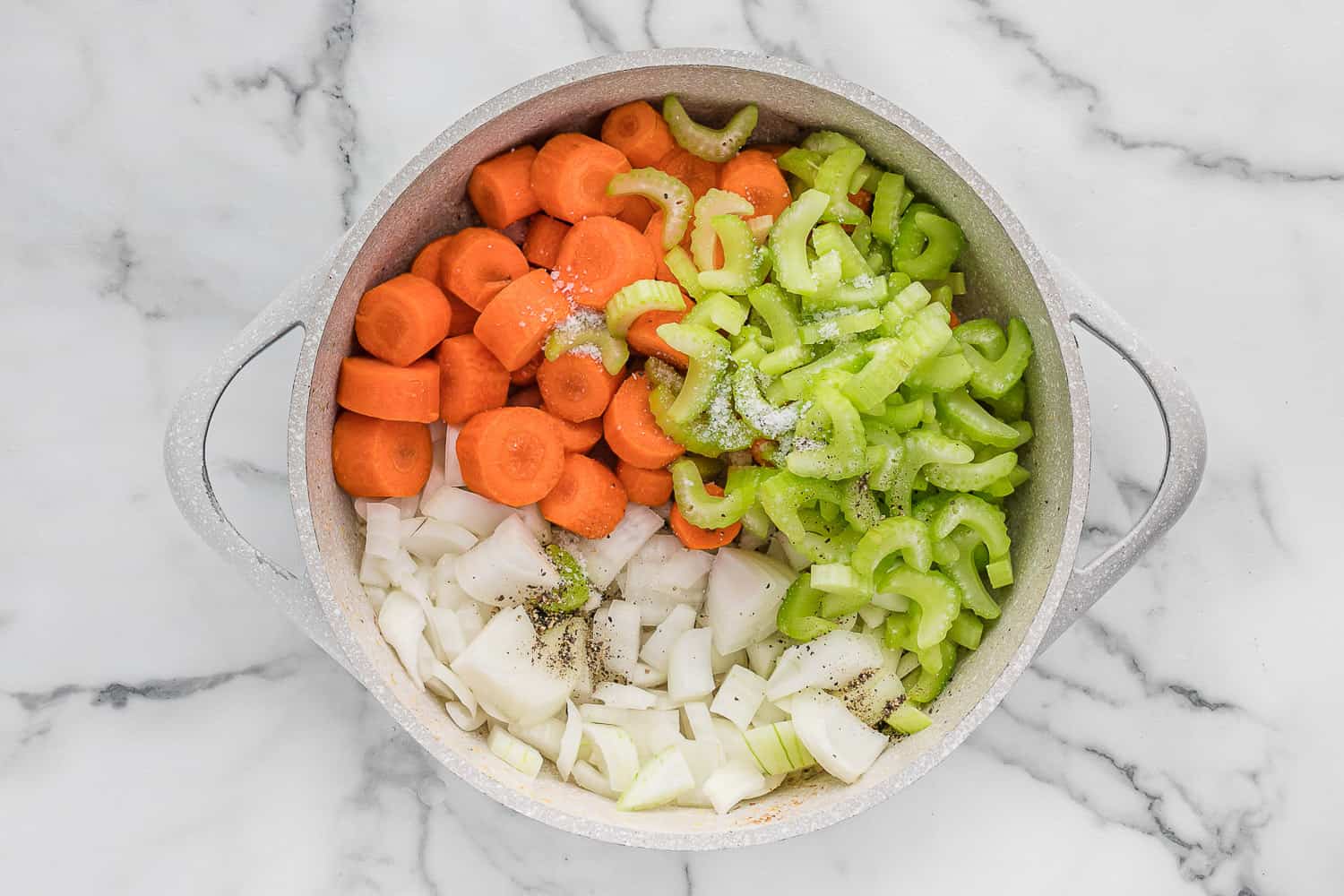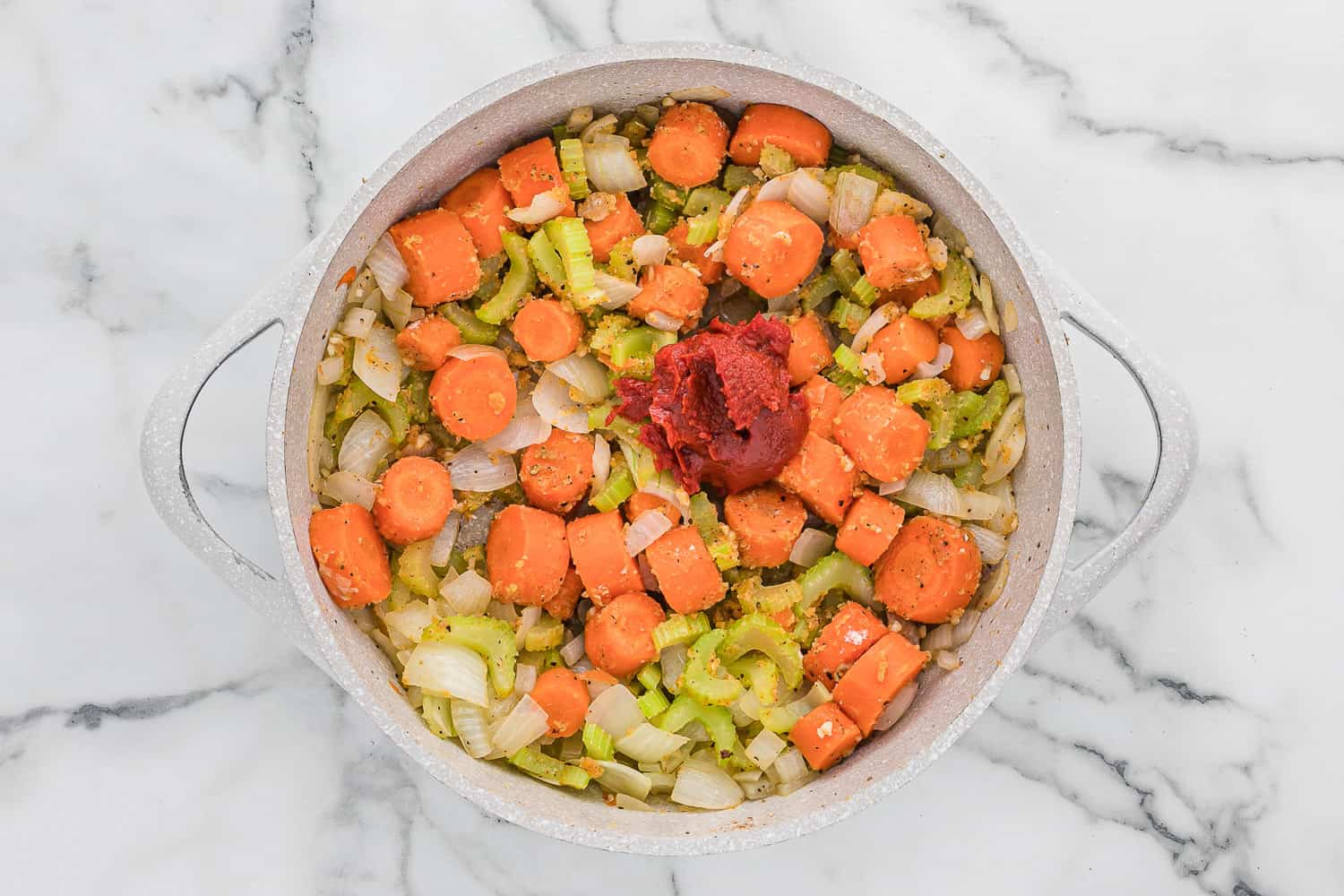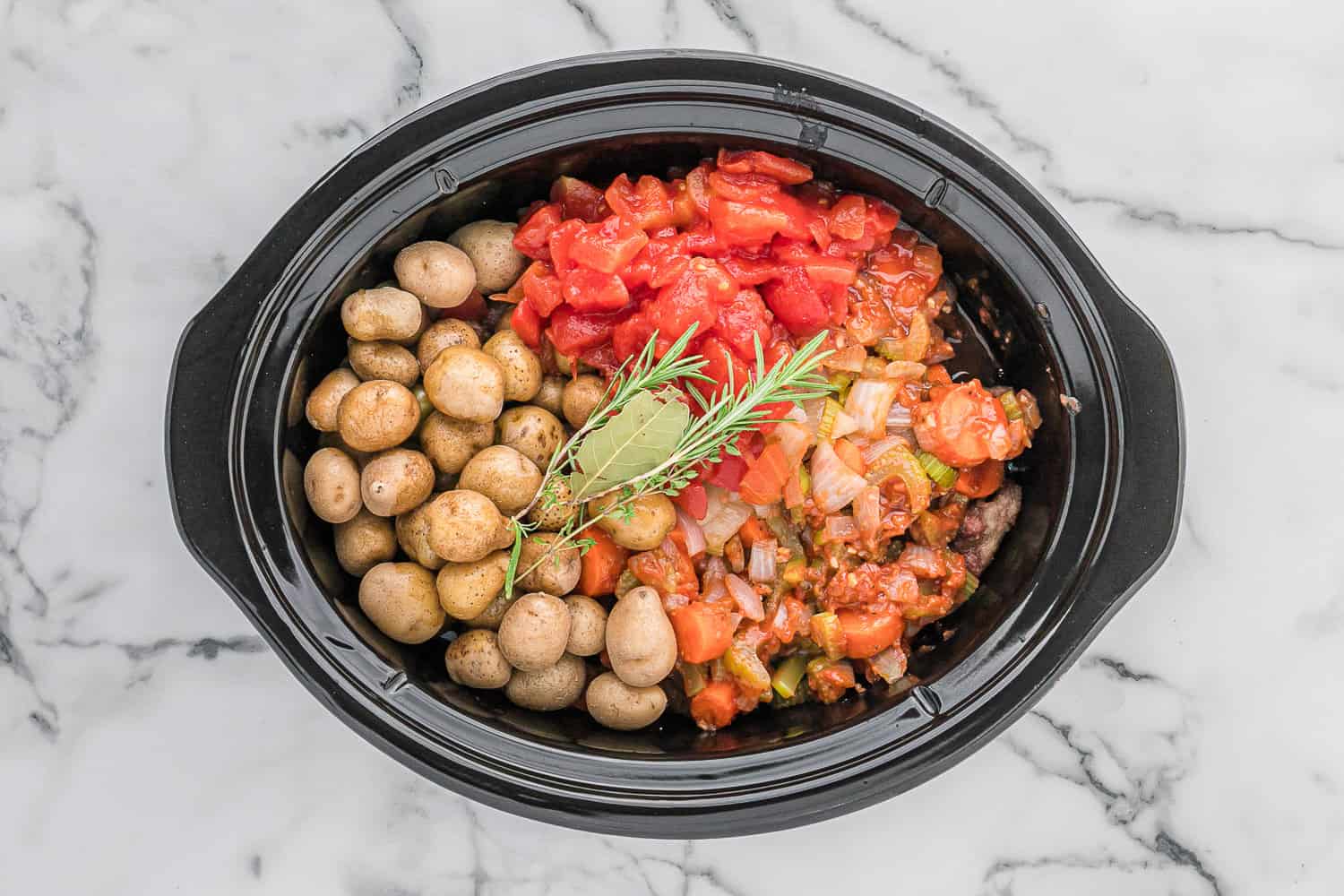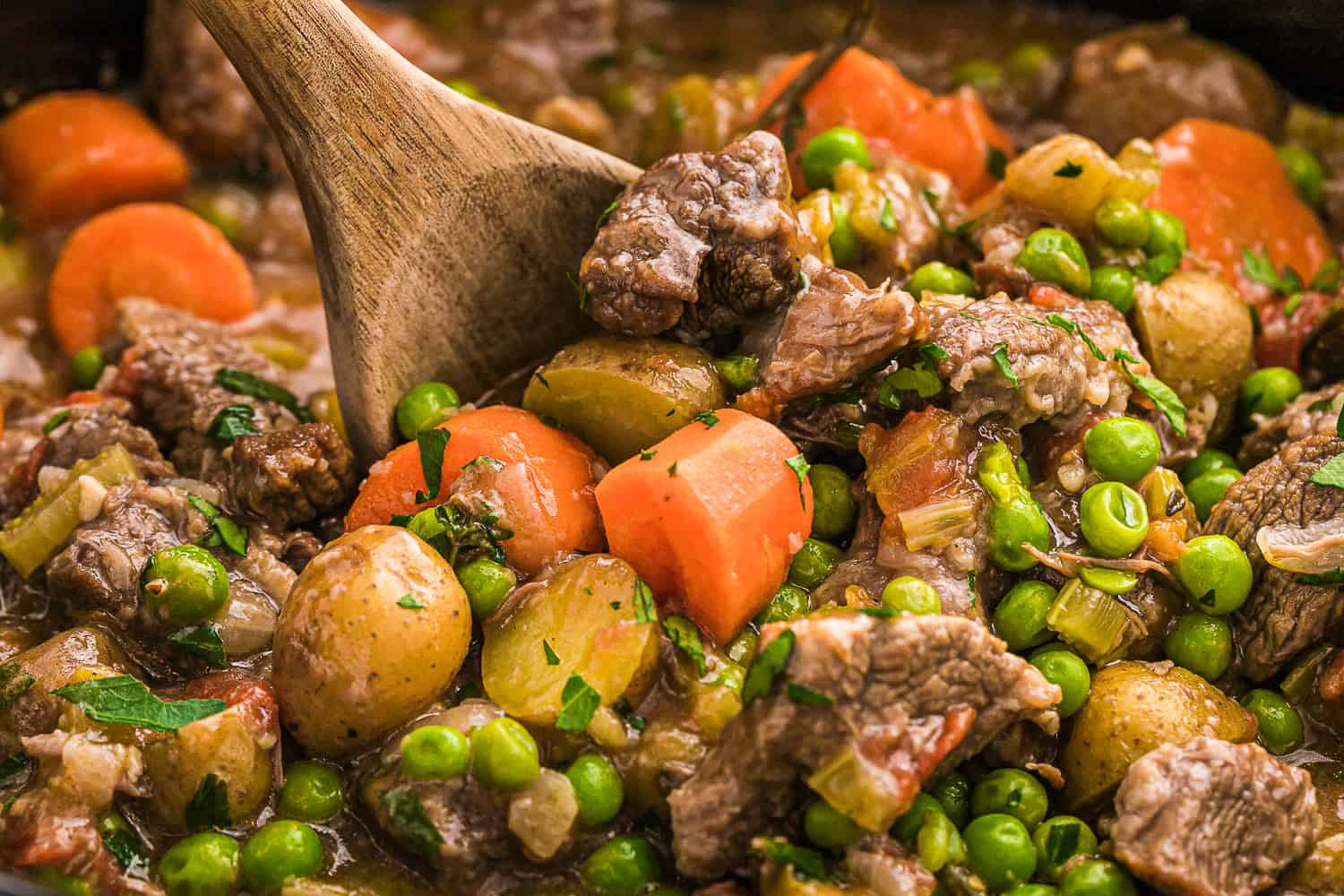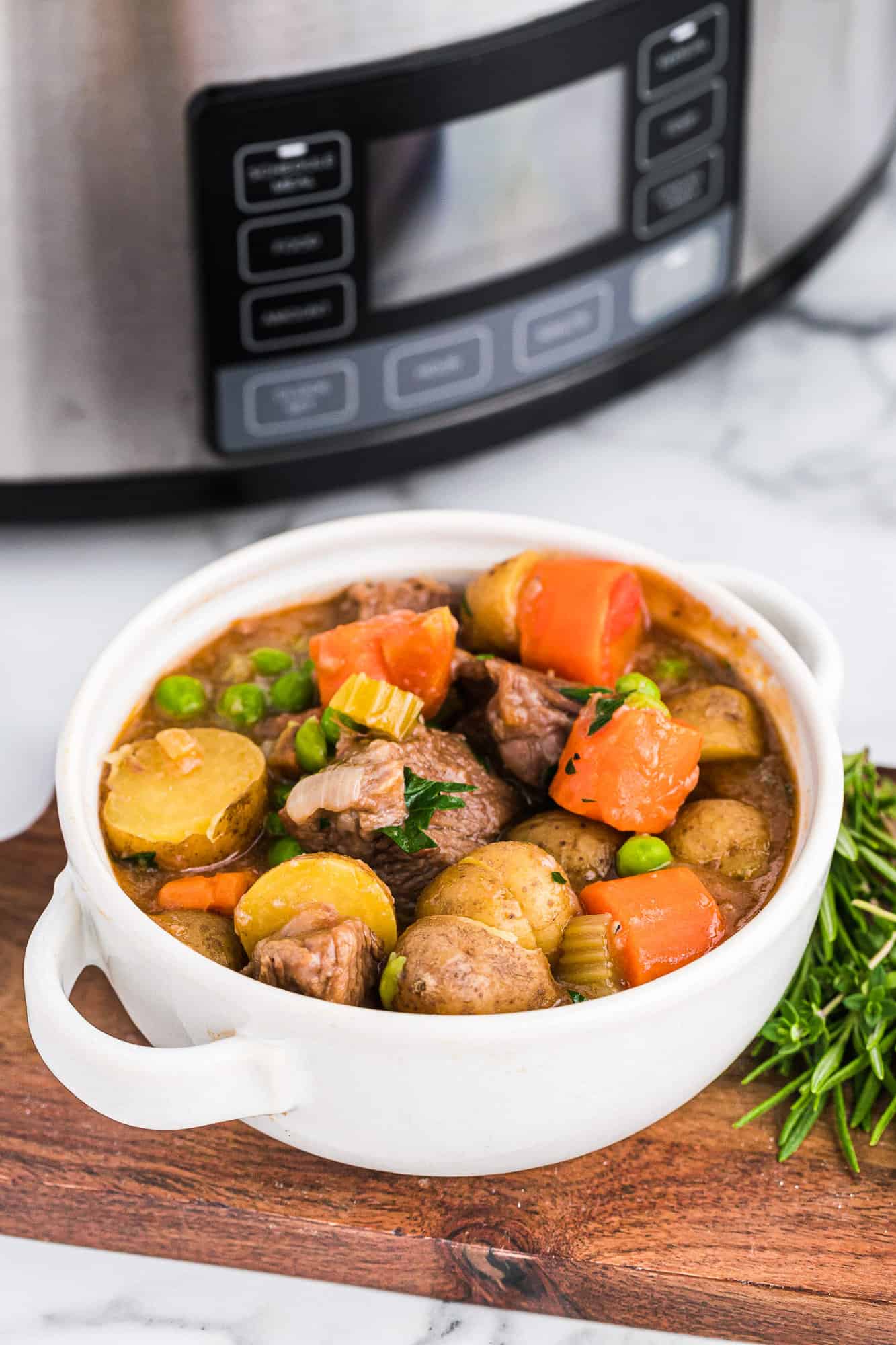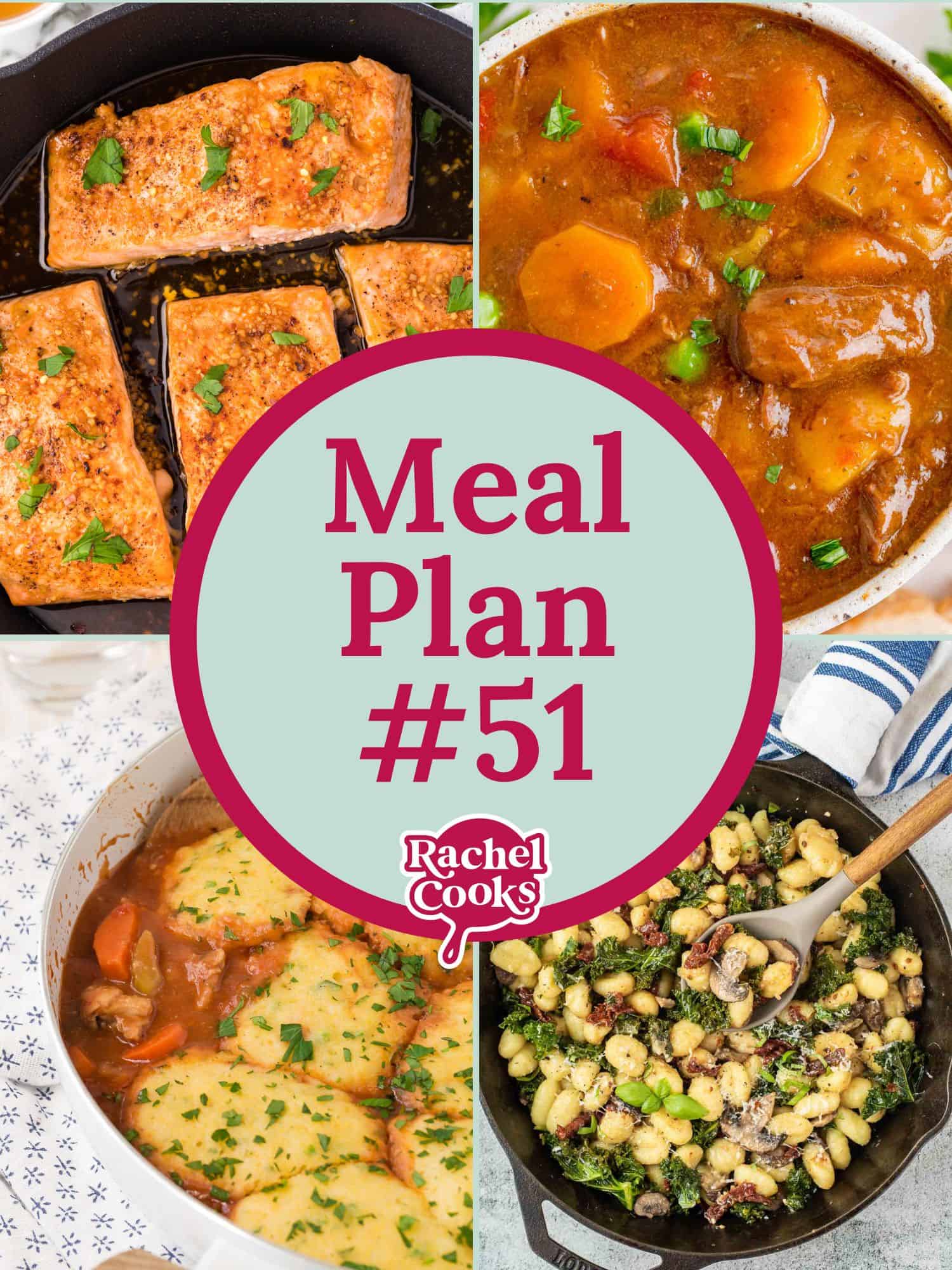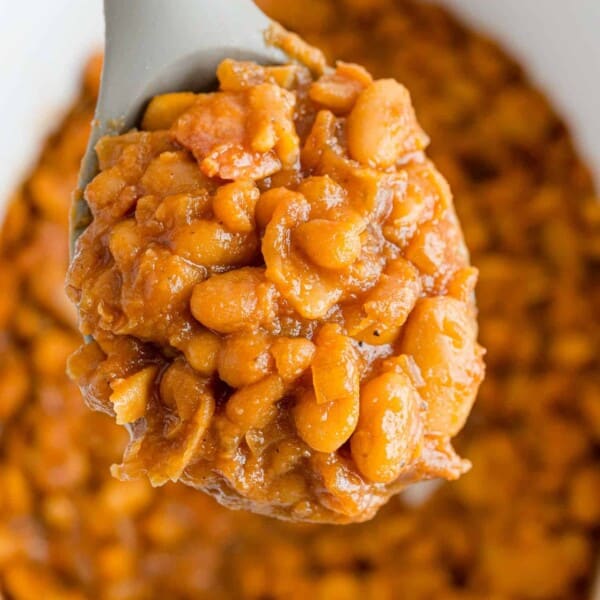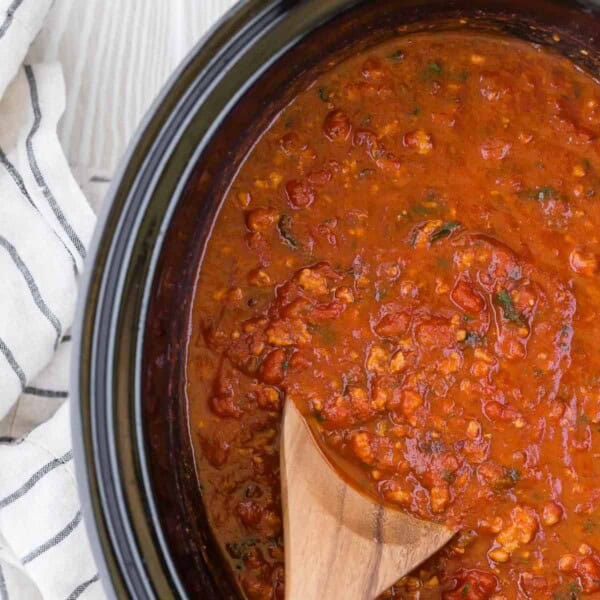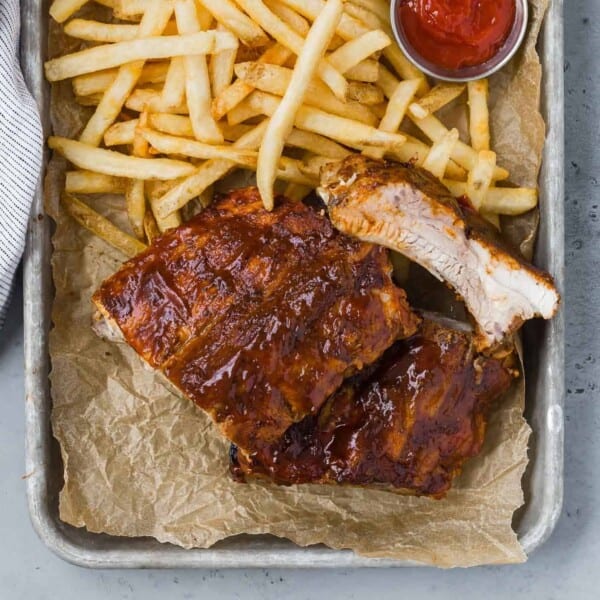How long it takes: 4 to 8 hours, depending on whether you cook it on Low or High Equipment you’ll need: large skillet, slow cooker Servings: 8 Slow cooker beef stew is great for weekends when you want to start dinner cooking in the morning, spend the day with lots of outdoor activities, and then come back and have a nice hearty dinner waiting for you.
Hearty Beef Stew
Slow cooker beef stew is perfect for busy days. Cooking beef stew in the slow cooker is an easy way to do it. It’s almost completely hands-off once you get it started. Crockpot beef stew is great for busy weeknights when you have a little time to prep in the morning but won’t have any time in the afternoon or evening to cook. Imagine coming into your house and being welcomed by the smell of good old-fashioned stew. It doesn’t get much better than that! Slow cooking means the beef gets extra tender. The low, slow heat breaks down the beef, making it ultra-tender, exactly how you want it to be in a good beef stew. You won’t have to worry about making side dishes. Stew is pretty much a stand alone meal, with protein, potatoes, and vegetables. However, if you want to serve something with your stew, I recommend warm Dutch oven bread or Parker House rolls. Lately we’ve been loving this crusty beer bread. It’s super easy to make. Truly, you can stir it together in 10 minutes, and it smells so good when it’s baking. Finish the meal with homemade vanilla pudding and oatmeal raisin cookies. Easy to switch out ingredients. You’ll find that beef stew is very versatile. Hate carrots? Leave them out. Hate onions? Leave them out. Hate potatoes? Leave them out. Just don’t leave all three out, okay? Hate beef? Make a different recipe. Maybe you’d like Moroccan stew with butternut squash and chickpeas!
Ingredient Notes
Beef Chuck Roast: You can buy already cubed stew meat but I find that a chuck roast is less expensive and it’s easy to cut yourself. Chuck roast is a cheaper cut of meat and requires braising or slow cooking, which breaks down the tough connective tissue. Put the meat in the freezer an hour or so before cutting it. You’ll be amazed at how easily you’ll be able to slice through it. Flour, with Salt, Pepper, Paprika, and Garlic Powder: The beef cubes are tossed in this mixture to add flavor and thickening for the gravy. Carrots, Celery, Onion, Potatoes: Vegetables typically found in beef stew. They are longer cooking vegetables that are perfect for long slow simmering. I like to use whole baby potatoes because they hold their shape better. Tomato Paste: This rich tomato concentrate adds umami to the stew. Red Wine: Wine makes everything taste better, right? Use a dry red wine so your stew doesn’t taste sweet. Beef Broth: Some folks add water but why not up the flavor profile with rich beef broth? Look for low or no sodium. Canned Diced Tomatoes: Again, look for no-salt added tomatoes. Herbs: A sprig each of rosemary and thyme, along with a dried bay leaf and chopped fresh parsley, add plenty of flavor, Dried herbs can be substituted but use less. Frozen Peas: Bright green peas add a pop of color and freshness. It’s best if you add them near the end of the cooking time so they don’t get overcooked. Cornstarch: Used to make a slurry which thickens the stew so you’ll have a nice rich gravy.
How to Make Beef Stew
It’s important to sear or brown the beef before you add it to the slow cooker. It adds so much flavor and the beef looks better too. Don’t be tempted to skip this step! Dredge the beef cubes in seasoned flour (save the excess flour) and add them to a large skillet with hot oil. Sear the cubes on all sides. You’ll have to do it batches unless you have a huge skillet. The beef won’t be nearly cooked through but will just have a nice brown appearance. Transfer it to the crockpot. Don’t wash the skillet yet! Put the carrots, celery, and onions in the skillet and sauté them lightly. Throw the garlic in for a minute, stirring and cooking until it’s fragrant, and then add that excess flour that you saved from the beef. Cook and stir for another minute or two. Add the tomato paste to the skillet and then the red wine. Simmer the mixture briefly to deglaze the pan (remove the browned bits) and reduce the wine a bit. Now add everything to the crockpot! Well, not everything! Save out a half cup of the broth and the cornstarch to make a slurry later. You’ll also want to add the peas and parsley right near the end of the cooking time so they retain their bright green color. After almost everything gets added to the crockpot, let the stew cook for 4 to 5 hours on High, or 8 to 9 hours on Low. Don’t “stew” if it’s more time than that. This meal is really easy going about delayed dinnertimes. Life happens, right? To finish up, stir the cornstarch into the reserved half cup of broth until the mixture is smooth. Stir the cornstarch slurry back into the stew and cook it for an additional half hour. The cornstarch will thicken the stew to the perfect stewy consistency that you want. Add the peas and parsley, check the seasoning, and your crockpot beef stew is ready to go. All that’s left to do is to dig in!
Helpful Tips
Choose the right kind of meat. The best meat for beef stew is a cut with a good marbling of fat as opposed to very lean cuts. A chuck roast works great. You can cut it yourself or have your butcher cut it into cubes for you. Inexpensive cuts are perfect for stew because the connective tissue has time to break down and become tender with slow cooking. Brown the meat first. Both raw beef and seared beef can be cooked safely in a crockpot because the cooking heat is high enough to kill any harmful bacteria. However, for the best flavor, you should brown the meat before adding it to the slow cooker. Searing the meat at a high heat caramelizes the outside and adds so much flavor to your stew. It also is more visually attractive. Pay attention to cooking time. This is true even when you use your slow cooker. If you find that your stew meat is still tough, chances are that it hasn’t cooked long enough. However, it’s possible to cook the stew too long, too. The meat may become dry and the vegetables mushy. It’s all edible but it won’t be the best quality. You may prefer the shorter cooking time on High compared to all day on Low. For more detailed “stew science”, check out Serious Eats.
Recipe Variations
This is a very traditional beef stew recipe but you can definitely put your own twist on it.
Substitute beef stew seasoning. Instead of using the spices in this recipe, try using homemade beef stew seasoning mix. If you have a jar of beef stew seasoning in your pantry, it is amazing in this recipe and simplifies it a bit. Use onion soup mix. It’s a really flavorful, delicious alternative to beef stew seasonings. Better yet, use homemade onion soup mix. Brighten up the flavor. Add acidity with a splash of balsamic vinegar when the stew is done cooking. It really adds depth to the flavors. Start with a tablespoon and add more to taste. Sub in beer for the wine. Prefer beer to red wine in your stew? It’s perfect for game day! You can definitely substitute beer for the red wine in this recipe. Choose a stout, porter, or dark ale. Don’t have a slow cooker? Try Instant Pot beef stew or beef stew simmered on the stovetop.
Make-Ahead Ideas
Get a head start. If I know I’m going to be in a pinch for time in the morning, I prep the veggies a day ahead. Prep the carrots, celery, and onions, put them into a zip-top bag and refrigerate. Put cut potatoes in a bowl of water, making sure they are covered by water completely, and cover. Drain the water off before adding the vegetables to the stew.
How to freeze beef stew
I find that potatoes don’t do super well if they’re frozen and then thawed. They tend to get mushy. You could leave them out if you plan to freeze this, and then add boiled or roasted potatoes when you reheat the stew, or serve it over mashed potatoes (yum!). Another alternative is my beef barley soup, with tender chunks of beef but no potatoes. It freezes really well.
Storage & Reheating Tips
Refrigerate: You’ll be so happy you have stew left over. It warms up beautifully and tastes just as good the second time, if not better. Simply put the leftover stew in a covered container and refrigerate for up to 4 days. Enjoy another hearty dinner or lunch that’s already made! Don’t you just love it?! Reheat: Put the leftover stew into a saucepan or large skillet and heat it gently on the stove. You can also heat individual bowls of stew in the microwave. Interested in a weekly meal plan (it’s free!) that includes this easy stew recipe? Take a look at Meal Plan #51 or Meal Plan #84. You’ll find a wholesome recipe for each weekday plus a categorized grocery list. We add a new meal plan weekly. Quick-Start Guide!




